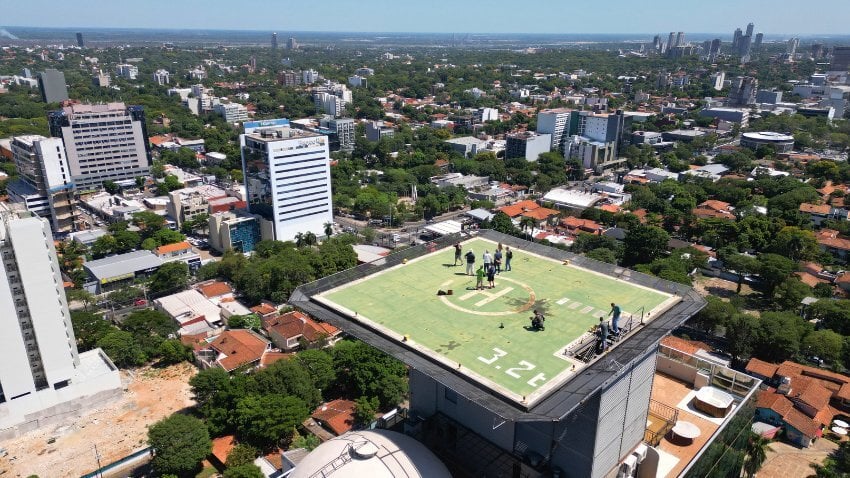The Different Types Of Residency You Need To Know
People choose the expat lifestyle for many reasons. Some seek greater personal freedom and better financial opportunities, while others want a lower...

6 min read
You might be familiar with the idea that diversifying your investments is key to protecting your wealth.
While diversification helps with wealth protection, many financial planners and advisors recommend traditional assets like bonds, mutual funds, and stocks. However, these conventional assets are intangible and susceptible to market manipulation, leading to returns that may not always meet your expectations.
Moreover, their value can be volatile and unpredictable, making them less reliable for long-term wealth protection. Conventional Individual Retirement Arrangements (IRAs) – the most common retirement plan in the U.S. – often include only these types of investments, limiting your ability to truly diversify and protect your wealth effectively.
Diversification is a strategy you must take with a grain of salt, as it’s hard to tell whether you’re doing it properly. If you invest only in the assets above, you might not be protecting your wealth as much. For example, the value of stocks is often ‘on steroids’ – mostly because of the trillions of dollars created out of thin air by the Federal Reserve and associated loose lending policies – selling the illusion of profits.
So, the question is, what can you do about it? The answer lies in a special type of IRA: Self-Directed IRAs (SDIRAs).

With their incredible versatility, SDIRAs allow for investments in cryptocurrencies, foreign stocks, real estate, private equity, and also precious metals
Before discussing the basics of Self-Directed IRAs (SDIRAs) and how they can help you with your retirement, it is important to understand IRAs. These financial tools help you boost your retirement savings, not in the form of savings accounts, but as investment vehicles with attractive tax benefits. With an IRA, you can set money aside to secure a stable retirement. There are three types of IRAs:
The Traditional IRA is probably the most popular type. Contributions to this account may be tax-deductible, depending on factors like your income and filing status. The money you invest grows tax-free until you withdraw it in retirement; then, it's taxed as regular income. One downside is that you can typically only invest in traditional assets like stocks, bonds, and mutual funds. Remember that early withdrawals, generally before age 59 ½, may incur penalties, though there are some exceptions.
Another popular choice is the Roth IRA, which makes contributions with after-tax dollars. Your investment options are typically limited to conventional assets like stocks and bonds. Even though Roth IRAs offer no deductions for contributions, your investments grow tax-free. At the same time, the initial contributions can be withdrawn at any time without incurring further taxes or penalties. Withdrawals during retirement are tax-free as long as you meet certain conditions.
A Self-Directed IRA (SDIRA) is a type of retirement plan that allows you to invest in a wider range of assets besides bonds, mutual funds, and stocks. SDIRAs can be opened either as a Traditional or a Roth IRA.
SDIRAs allow you to invest in real estate, cryptocurrencies, foreign stocks, private equity and even precious metals. The most important aspect of SDIRAs is their versatility. You are not confined by low-performing assets like stocks and bonds but can tap into potentially more lucrative opportunities like real estate or gold, which hold inherent value. Everyone will always need a place to live or work, while gold is a solid hedge against inflation. Whether you want to invest in Panamanian real estate or gold in Switzerland, an SDIRA lets you maneuver more freely.
The setup process tends to be fairly straightforward and can be broken down into the following three steps:
Choose a Custodian: Select a custodian that offers SDIRA services. They will be in charge of the administrative tasks while ensuring your account adheres to IRS rules;
Open and Fund the Account: Complete the necessary paperwork to open your SDIRA. You can fund the account by transferring or rolling over assets from an existing IRA or making new contributions;
Select Investments: Once your account is set up and funded, you can select and direct your investments. Work closely with your custodian to purchase the desired assets, whether real estate, private equity, or other non-traditional investments.

Unlike traditional IRAs, which are limited to U.S. assets, SDIRAs allow you to mitigate the impact of weaker performances by enabling the purchase of properties in Panama and gold in the Cayman Islands simultaneously
When I think of diversification, I go beyond the headlines. Aside from holding different assets, I focus on two major points: tangible assets (e.g., real estate and timber) and the best jurisdictions to hold them. From gold vaults in Hong Kong to timber plantations in Paraguay, I diversify my portfolio so that I don’t depend on a single country. This is the diversification I recommend my clients to strive for. This is what you get with Self-Directed IRAs (SDIRA).
In today’s article, you will discover how to use an SDIRA for offshore investing, from understanding its benefits to navigating the setup process and regulatory considerations.
Whether you're looking to invest in international real estate, private equity, or foreign currencies, we'll show you how an SDIRA can help you optimize your financial strategy and protect your wealth.
Investing offshore with a Self-Directed IRA has multiple perks that can boost your financial portfolio, as you can see below.
You can invest in a wide range of asset types and jurisdictions. Diversifying your investment portfolio beyond domestic markets allows you to manage risk and achieve stable, long-term growth. You can spread your investment across multiple countries and assets. As opposed to traditional IRAs that are often limited to U.S. assets, SDIRAs allow you to mitigate the impact of poor performance in any single market. For example, you could purchase property in Panama and gold in the Cayman Islands.
Offshore investments may offer higher returns, especially when considering opportunities in emerging and frontier markets. As demand increases over time, rapidly growing economies may offer higher returns than those of developed countries. These investments are appealing to expats interested in specific international markets and trends. Imagine investing in beachfront property in Brazil and Colombia or even precious metals in the UAE. Not only are the returns potentially higher, but you can also benefit from better tax and regulatory frameworks to cash in handsomely.
Just like gold is a hedge against inflation, diversification across jurisdictions is a hedge against domestic risks. Your home country might face economic collapses, political instability, and regulatory changes that affect your assets. However, your portfolio can be well-guarded if a fraction of your assets are held outside your country’s borders, preferably in a tax and investment-friendly jurisdiction.

Please note that while it's not required to use an LLC with your SDIRA, doing so can offer more investment opportunities, particularly in real estate
To invest offshore with an SDIRA, you must follow a simple process involving a few key steps. Here’s a simple outline to get you started:
The first step is choosing a qualified custodian to hold your assets and help you comply with IRS regulations. Avoid traditional firms that only allow conventional assets and go for one that works with offshore investments. As always, do your due diligence by checking their reputation, fees and range of services.
The next step is researching and selecting your preferred investments. Again, please do your due diligence, assess risks, and identify your investment goals. Consider the market conditions, economic stability, and legal requirements of every country on your radar. It is also important to seek advice from financial advisors or experts specializing in offshore investments.
Before you learn how to set up your SDIRA, keep in mind that, though not mandatory, it may be advisable to use an LLC to facilitate certain transactions. The following steps, therefore, will consider there is an LLC in place:
Establish an LLC (whether onshore or offshore), making sure it aligns with your specific needs, such as privacy and tax efficiency;
Then, your IRA owns the LLC, although you ultimately control it as the IRA owner. This means your IRA, not you, technically owns the LLC, and the LLC owns the assets. You are named the investment advisor and/or fund manager, allowing you to direct the LLC's activities;
You set up a bank account (whether onshore or offshore) in the name of the LLC to manage the funds;
Your IRA custodian invests your retirement funds into the LLC. This arrangement allows the LLC to buy, sell, rent, and manage properties or other investments as you direct them.
Once again, please note that using an LLC along with your SDIRA is not mandatory, but it may provide you with more investment options, especially regarding real estate. However, ensure you work with a reputable custodian who will assist you in defining the right strategy for your specific investing goals.
Since you’re investing offshore but you’re an American tax resident, you have obligations towards the foreign jurisdictions of your choice and the US. You must fulfill certain reporting requirements, so ensure a proper custodian helps you stay compliant.
Finally, you can invest in whatever you please. Your custodian should help you complete the necessary paperwork and transfer funds to make the investment. While they will handle administrative tasks and ensure compliance with IRS regulations, please keep records of all transactions and review the performance of your investments.

Remember to conduct thorough due diligence and select experienced financial advisors and SDIRA custodians. They will provide guidance throughout the process and ensure your compliance with all regulations
In summary, an SDIRA will help you explore other assets that traditional IRAs do not allow. From cryptocurrency to international real estate and more, you can secure your wealth through potentially more profitable investments. Investing in offshore countries also gives you a solid hedge against home economic and political risks. The flexibility and control an SDIRA provides will allow you to tap into global opportunities and create a really diversified portfolio.
Remember to do your due diligence and consult with experienced financial advisors and SDIRA custodians. They will walk you through the process, help you stay compliant, and, ultimately, find investment opportunities that align with your long-term financial goals. If you want to stay up-to-date with new expat trends and other information to help you secure what’s rightfully yours, claim our free guide, ‘19 International Strategies To Protect And Grow Your Wealth Abroad’.
If you want the best intel from the expat world, including profitable offshore opportunities, little-known tax-saving strategies, and hard-won insights on immigration, passports, and Plan-B residencies, all delivered to your inbox every single week, then join our daily correspondence, EMS Pulse®. Currently enjoyed by over 84,000 expats and expat-hopefuls worldwide. Fill in the form below to join our newsletter free:

Written by Mikkel Thorup
Mikkel Thorup is the world’s most sought-after expat consultant. He focuses on helping high-net-worth private clients to legally mitigate tax liabilities, obtain a second residency and citizenship, and assemble a portfolio of foreign investments including international real estate, timber plantations, agricultural land and other hard-money tangible assets. Mikkel is the Founder and CEO at Expat Money®, a private consulting firm started in 2017. He hosts the popular weekly podcast, the Expat Money Show, and wrote the definitive #1-Best Selling book Expat Secrets - How To Pay Zero Taxes, Live Overseas And Make Giant Piles Of Money, and his second book: Expats Guide On Moving To Mexico.
.jpg)
People choose the expat lifestyle for many reasons. Some seek greater personal freedom and better financial opportunities, while others want a lower...

What would you do if tensions between world powers escalated to nuclear conflict? With the ongoing crises in the Middle East and Ukraine, many people...

Every year brings new lessons, opportunities, and milestones worth revisiting. As 2025 comes to a close, we’re taking a moment to reflect on the...